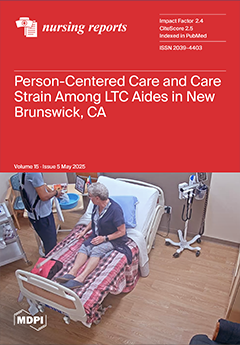Background/Objectives: Lower-limb amputation profoundly affects individuals and their family caregivers, particularly during home transition after hospital discharge. Understanding the needs, challenges, and emotions during this period is essential for designing effective family centered empowerment interventions. This study aimed to explore the lived experiences
[...] Read more.
Background/Objectives: Lower-limb amputation profoundly affects individuals and their family caregivers, particularly during home transition after hospital discharge. Understanding the needs, challenges, and emotions during this period is essential for designing effective family centered empowerment interventions. This study aimed to explore the lived experiences of amputees and their caregivers, identify their needs and challenges, and identify strategies to foster empowerment, resilience, and adaptation after amputation.
Methods: This qualitative, descriptive-exploratory study involved semi-structured interviews with 37 dyads, each comprising an amputee who has undergone major dysvascular lower-limb amputation and their primary caregiver, who provided home care. The participants attended follow-up consultations post-amputation. Data were collected over a 13-month period and analyzed using qualitative content analysis based on Bardin’s methodology, with support from ATLAS.ti 23.3.4 software for coding and data organization.
Results: Four categories emerged: (i) difficulties faced, including loss of autonomy, mobility challenges, architectural barriers, and emotional strain; (ii) home discharge, emphasizing functional training for amputees and caregivers and the need for community support; (iii) impact of amputation, highlighting acceptance difficulties, psychological distress, social isolation, and lifestyle changes; and (iv) empowerment strategies, focusing on psychological support, skills training, assistive devices, and coordinated care. Tailored interventions such as peer support, home adaptations, and multidisciplinary care are essential for resilience, independence, and improved quality of life.
Conclusions: Family centered empowerment strategies are vital for improving the outcomes of amputees and caregivers. Interventions that prioritize caregiver education, psychological support, and enhanced accessibility promote resilience, autonomy, and quality of life. These findings highlight the need for integrated hospital-to-community programs.
Full article






